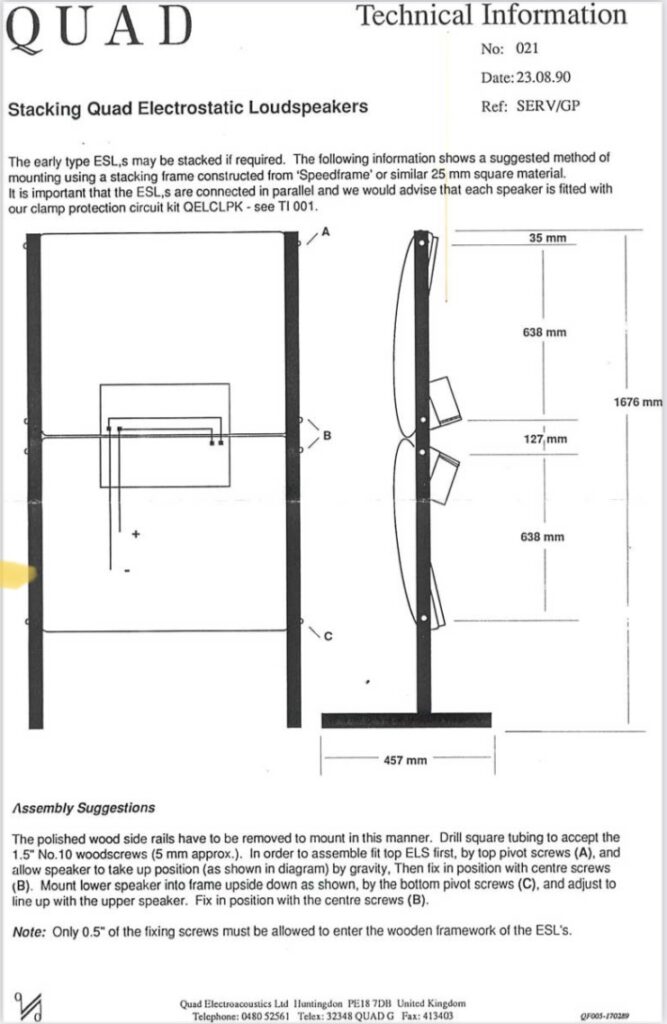Original stands are quite low, 13 cm. Usual recommendation is to raise panel up to 28 or 35 or even 45 cm depending on source. Then you can keep original tilt or straighten it or even better making it adjustable. Example below:

The Rupert Stands (OneThingAudio) raises them about 280mm and maintains the original tilt angle whilst the Sheldon Stoke’s Stand raises them 460mm and places the speaker vertical as the top of the stands have a 12 degree face.
My preference right now is to keep more or less the original tilt, even if raised higher than original height. Example: https://mniec.wordpress.com/2011/06/25/quad-esl-57-siderails-sidefeets-blueprint/
In case links are broken, here are files:
https://esl.drakkapps.com/wp-content/uploads/2020/01/quad-esl57-siderails.pdf
https://esl.drakkapps.com/wp-content/uploads/2020/01/quad-esl57-colors.pdf
My own stands
To be used as a suggestion only: make up your own mind !
Material: planks, 20cm wide, 18mm thick, 200cm long. The kind of which is used for shelves for example.
Startpoint is to cut 2 pieces 110cm long. This will raise the speaker of 37cm.
3 holes are drilled in these planks at the exact position where the side pieces of wood are screwed in the original design (screws: 3.5x35mm). I chose 4.5cm from the boarder for the 2 lower holes, and 3.5cm from the top for the higher hole.
Tip: use the original side piece of wood to mark drilling points and plan for several vertical positions of the speaker to experiment various tilt angles.
Then, a 87.8cm long is cut for the top. A smaller one of 84.2cm (87.8cm-2*18mm) will be used for the bottom, placed at 34cm from the bottom of the side planks.
Stands for stacking

![]()